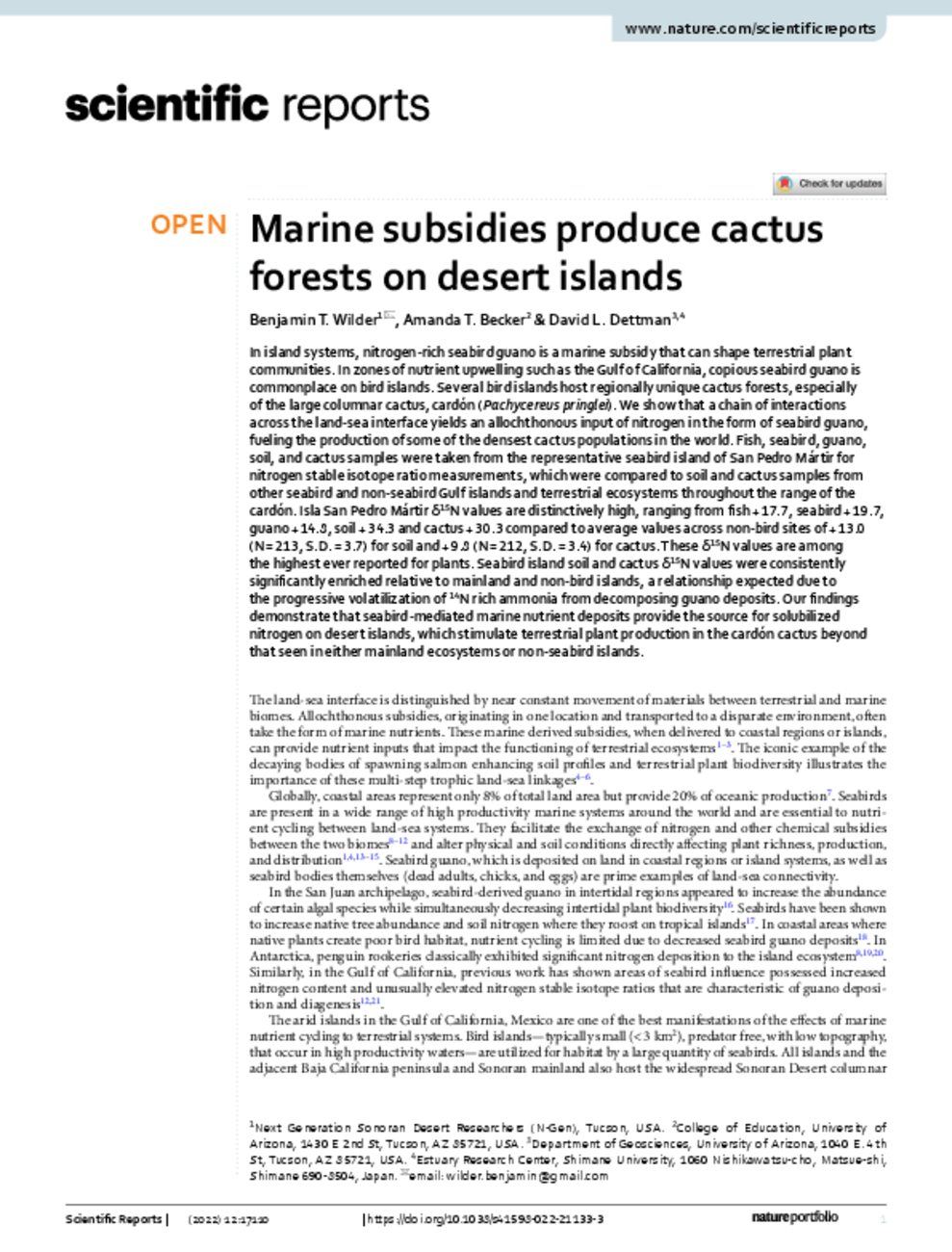Marine subsidies produce cactus forests on desert islands
In island systems, nitrogen-rich seabird guano is a marine subsidy that can shape terrestrial plant communities. In zones of nutrient upwelling such as the Gulf of California, copious seabird guano is commonplace on bird islands. Several bird islands host regionally unique cactus forests, especially of the large columnar cactus, cardón (Pachycereus pringlei). We show that a chain of interactions across the land-sea interface yields an allochthonous input of nitrogen in the form of seabird guano, fueling the production of some of the densest cactus populations in the world. Fish, seabird, guano, soil, and cactus samples were taken from the representative seabird island of San Pedro Mártir for nitrogen stable isotope ratio measurements, which were compared to soil and cactus samples from other seabird and non-seabird Gulf islands and terrestrial ecosystems throughout the range of the cardón. Isla San Pedro Mártir δ15N values are distinctively high, ranging from fish + 17.7, seabird + 19.7, guano + 14.8, soil + 34.3 and cactus + 30.3 compared to average values across non-bird sites of + 13.0(N = 213, S.D. = 3.7) for soil and + 9.8 (N = 212, S.D. = 3.4) for cactus. These δ15N values are among the highest ever reported for plants. Seabird island soil and cactus δ15N values were consistently significantly enriched relative to mainland and non-bird islands, a relationship expected due to the progressive volatilization of 14N rich ammonia from decomposing guano deposits. Our findings demonstrate that seabird-mediated marine nutrient deposits provide the source for solubilized nitrogen on desert islands, which stimulate terrestrial plant production in the cardón cactus beyond that seen in either mainland ecosystems or non-seabird islands.

